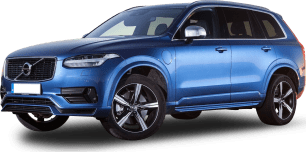At $74,990, the Touareg Monochrome 150 TDI costs $6000 more than the 150 TDI it’s based on, but this special edition adds extra equipment. We’re talking a proximity key and push-button start, power tailgate, heated steering wheel with paddle shifters, tinted rear windows and 19-inch ‘Moab’ wheels.
The Monochrome also comes with advanced safety equipment and design elements which aren’t on the 150TDI - you can read more about this in the sections below.
Along with those additional bits the Monochrome picks up all of the 150 TDI’s features. There’s an 8.0-inch touchscreen with sat nav, rear view camera with guidance lines, DVD player, Bluetooth connectivity, leather upholstery, heated and power adjustable front seats, bi-xenon headlights and LED running lights.
There’s also dual-zone climate control with directional vents in the second row.
Be prepared for know-it-all neighbours peering over the fence telling you the Touareg’s too expensive. Yes, it’s pricey for a Volkswagen, but when you compare it to high-end SUVs such as BMW’s X5, Mercedes-Benz’s GLE and Audi’s Q7 it’s at least $20K less.
If that still doesn’t convince those next door, drop the C-bomb on them. No, not that one, the other one – ‘Cayenne’, as in Porsche Cayenne. Being part of the Volkswagen family the Touareg is the Cayenne’s close sibling, and shares a high percentage of design DNA (including the same platform) but the Porsche costs about $110K for the base diesel V6.
The Touareg Monochrome 150 TDI’s price is interesting, because it’s not too far above the list price of the similarly sized top-of-the-range Toyota Kluger Grande ($69,906), and Mazda CX-9 Azami ($64,790).
With similar dimensions but a bit dearer, the Lexus RX350 ($84,700) is also in range. Finally, and you may not have considered it, the closest fit to the Touareg Monochrome is a Jeep Grand Cherokee Limited ($67,700).
The standard features list for the Touareg Monochrome 150 TDI may look great, but the truth is much of the gear isn't that modern. For starters, the screen's graphics feel dated, as does the instrument cluster.
So, here’s the thing you must know before you buy the Touareg: a new-generation Touareg is scheduled to arrive in 2019. This will be a totally new car, with different styling and more up-to-date technology.
If it was me I’d hold off until this came out. If you’re looking for a bargain on an already excellent car, you might want to purchase this Touareg – you can bet the new one will be more expensive and dealers will be keen to shift the current version.


































.png)
























